 W
WAs I Lay Dying is a 1930 Southern Gothic novel by American author William Faulkner. Faulkner's fifth novel, it is consistently ranked among the best novels of 20th-century literature. The title derives from Book XI of Homer's Odyssey, wherein Agamemnon tells Odysseus: "As I lay dying, the woman with the dog's eyes would not close my eyes as I descended into Hades."
 W
WThe Bungalow Mystery is the third volume in the Nancy Drew Mystery Stories series written under the pseudonym Carolyn Keene. It was the last of three books in the "breeder set" trilogy, released in 1930, to test-market the series.
 W
WThe Cat Who Went to Heaven is a 1930 novel by Elizabeth Coatsworth that won the Newbery Medal for excellence in American children's literature in 1931. The story is set in ancient Japan, and is about a penniless artist and a calico cat his housekeeper brings home.
 W
WCharlie Chan Carries On (1930) is the fifth novel in the Charlie Chan series by Earl Derr Biggers.
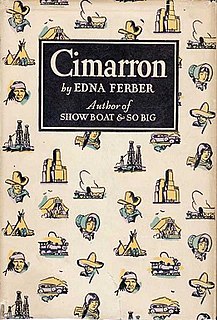 W
WCimarron is a novel by Edna Ferber, published in April 1930 and based on development in Oklahoma after the Land Rush. The book was adapted into a critically acclaimed film of the same name, released in 1931 through RKO Pictures. The story was again adapted for the screen by Metro-Goldwyn-Mayer and was released in 1960, to meager success.
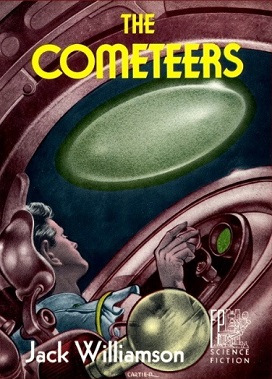 W
WThe Cometeers is a collection of two science fiction novels by the American writer Jack Williamson. It was first published by Fantasy Press in 1950 in an edition of 3,162 copies. The novels were originally serialized in the magazine Astounding in 1936 and 1939, and later released as individual paperbacks by Pyramid Books.
 W
WThe Luzhin Defense is the third novel written by Vladimir Nabokov during his emigration to Berlin, published in 1930.
 W
WDestry Rides Again is a 1930 western novel by Max Brand. One of Brand's most famous works, it remained in print 70 years after its first publication. It is the story of Harrison Destry's quest for revenge against the 12 jurors whose personal malice leads them to wrongfully convict him of robbery.
 W
WEast Wind: West Wind is a novel by Pearl S. Buck published in 1930, her first. It focuses on a Chinese woman, Kwei-lan, and the changes that she and her family undergo.
 W
WThe Eye, written in 1930, is Vladimir Nabokov's fourth novel. It was translated into English by the author's son Dmitri Nabokov in 1965.
 W
WThe Fifth Son of the Shoemaker is a book by Donald Corley, illustrated by the author. It was his best known work and his only novel, though according to Lin Carter it is actually "a volume of short stories under the guise of a novel." The book was first published in hardcover in New York by Robert M. McBride in September 1930.
 W
WFloating Island is a 1930 children's novel written and illustrated by Anne Parrish. A China-doll family's shipwreck and adventure in the Floating Island are told in the novel in the simple and colloquial style.
 W
WFreddy goes to the North Pole (1930) is the second of the Freddy the Pig books written by Walter R. Brooks. It tells of how the animals of the Bean Farm went to rescue some of their animals friends who went on an expedition to the North Pole.
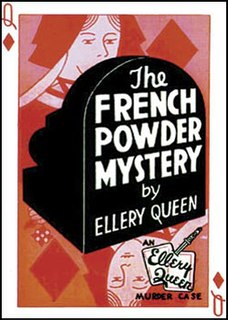 W
WThe French Powder Mystery is a novel that was written in 1930 by Ellery Queen. It is the second of the Ellery Queen mysteries.
 W
WGenerals Die in Bed is an anti-war novella by the Canadian writer Charles Yale Harrison. Based on the author's own experiences in combat, it tells the story of a young soldier fighting in the trenches of World War I. It was first published in 1930 by William Morrow.
 W
WGladiator is a science fiction novel by American author Philip Wylie, first published in 1930. The story concerns a scientist who invents an "alkaline free-radical" serum to "improve" humankind by granting the proportionate strength of an ant and the leaping ability of the grasshopper. The scientist injects his pregnant wife with the serum and his son Hugo Danner is born with superhuman strength, speed, and bulletproof skin. Hugo spends much of the novel hiding his powers, rarely getting a chance to openly use them.
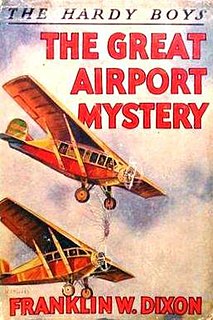 W
WThe Great Airport Mystery is Volume 9 in the original The Hardy Boys Mystery Stories published by Grosset & Dunlap.
 W
WThe Hidden Staircase is the second volume in the Nancy Drew Mystery Stories series written under the pseudonym Carolyn Keene, published in 1930 and revised in 1959. The original text was written by Mildred Wirt Benson, and she has said that it is her personal favorite of the Nancy Drew Books she wrote.
 W
WThe Invisible Host is a 1930 American mystery/thriller novel written by the husband-wife team of Gwen Bristow and Bruce Manning. It was published by The Mystery League, Inc. Though little remembered today, it did well enough in its own time for Hollywood to adapt it into a feature film, 1934's The Ninth Guest. Before its cinematic adaptation Pulitzer Prize winning dramatist Owen Davis had adapted it for a 1930 Broadway play with the same name as the subsequent film. It could be considered an example of the "old dark house" type of thriller.
 W
WThe Iron Star is a science fiction novel by American writer John Taine. It was first published in 1930 by E. P. Dutton.
 W
WIt Walks By Night, first published in 1930, is the first detective novel by John Dickson Carr which features for the first time Carr's series detective Henri Bencolin. This novel is a mystery of the type known as a whodunit.
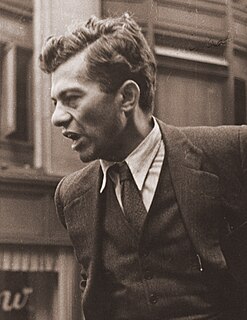 W
WJews without Money is a 1930 semi-autobiographical novel by American critic Mike Gold.
 W
WMadman's Drum is a wordless novel by American artist Lynd Ward (1905–1985), published in 1930. It is the second of Ward's six wordless novels. The 118 wood-engraved images of Madman's Drum tell the story of a slave trader who steals a demon-faced drum from an African he murders, and the consequences for him and his family.
 W
WThe Maltese Falcon is a 1930 detective novel by American writer Dashiell Hammett, originally serialized in the magazine Black Mask beginning with the September 1929 issue. The story is told entirely in external third-person narrative; there is no description whatever of any character's thoughts or feelings, only what they say and do, and how they look. The novel has been adapted several times for the cinema.
 W
WMaza of the Moon is a science fiction novel by Otis Adelbert Kline. It was first published in book form in 1930 by A C McClurg & Co. The novel was originally serialized in four parts in the magazine Argosy beginning in December 1929.
 W
WMeggy MacIntosh is a children's historical novel by Elizabeth Janet Gray. Beginning in 1775, it follows the story of a young Scottish orphan who becomes involved with the American revolutionary cause in North Carolina despite her attachment to Flora MacDonald, a loyalist. The novel, illustrated by Marguerite de Angeli, was first published in 1930 and was a Newbery Honor recipient in 1931.
 W
WNot Without Laughter is the debut novel by Langston Hughes published in 1930.
 W
WThe Secret of the Old Clock is the first volume in the Nancy Drew Mystery Stories series written under the pseudonym Carolyn Keene. It was first published on April 28, 1930, and rewritten in 1959 by Harriet Stratemeyer Adams.
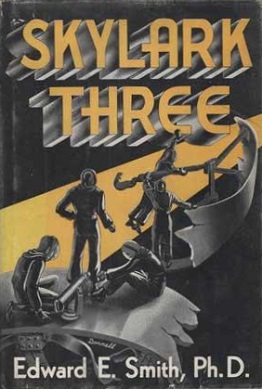 W
WSkylark Three is a science fiction novel by American writer E. E. Smith, the second in his Skylark series. Originally serialized through the Amazing Stories magazine in 1930, it was first collected in book form in 1948 by Fantasy Press.
 W
WTarzan at the Earth's Core is a novel by American writer Edgar Rice Burroughs, serialized in September 1929 to March 1930, the thirteenth in his series of twenty-four books about the title character Tarzan and the fourth in his series set in the interior world of Pellucidar.
 W
WThe U.S.A. trilogy is a series of three novels by American writer John Dos Passos, comprising the novels The 42nd Parallel (1930), 1919 (1932) and The Big Money (1936). The books were first published together in a volume titled U.S.A. by Modern Library in 1937.
 W
WThe Woman of Andros is a 1930 novel by Thornton Wilder. Inspired by Andria, a comedy by Terence, it was the third-best selling book in the United States in 1930.
 W
WYears of Grace is a 1930 novel by Margaret Ayer Barnes. It won the Pulitzer Prize for the Novel in 1931. Despite this, it is not her most well-known work; that honor belongs to Dishonored Lady, a play she co-wrote with Edward Sheldon, which was adapted twice into film.
 W
WThe Yellow Knight of Oz (1930) is the twenty-fourth in the series of Oz books created by L. Frank Baum and his successors, and the tenth written by Ruth Plumly Thompson. It was illustrated by John R. Neill.